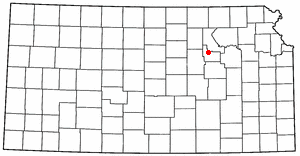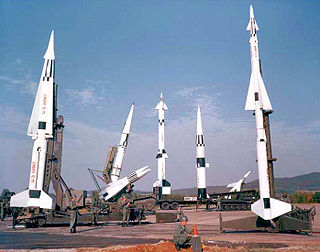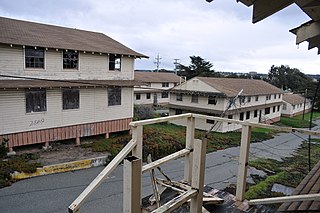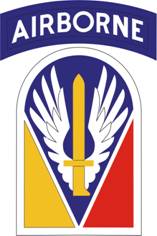
Fort Detrick is a United States Army Futures Command installation located in Frederick, Maryland. Fort Detrick was the center of the U.S. biological weapons program from 1943 to 1969. Since the discontinuation of that program, it has hosted most elements of the United States biological defense program.

Neosho is the most populous city in Newton County, Missouri, United States, which it serves as the county seat. With a population of 12,590 as of the 2020 census, the city is a part of the Joplin, Missouri Metropolitan Statistical Area, a region with an estimated 176,849 (2011) residents. Neosho lies on the western edge of the Ozarks, in the far southwest of the state.

Fort Bliss is a United States Army post in New Mexico and Texas, with its headquarters in El Paso, Texas. Named in honor of LTC William Bliss (1815–1853), a mathematics professor who was the son-in-law of President Zachary Taylor, Ft. Bliss has an area of about 1,700 square miles (4,400 km2); it is the largest installation in FORSCOM and second-largest in the Army overall. The portion of the post located in El Paso County, Texas, is a census-designated place with a population of 8,591 as of the time of the 2010 census. Fort Bliss provides the largest contiguous tract of restricted airspace in the Continental United States, used for missile and artillery training and testing, and at 992,000 acres boasts the largest maneuver area. The garrison's land area is accounted at 1.12 million acres, ranging to the boundaries of the Lincoln National Forest and White Sands Missile Range in New Mexico. Fort Bliss also includes the Castner Range National Monument.

Fort Riley is a United States Army installation located in North Central Kansas, on the Kansas River, also known as the Kaw, between Junction City and Manhattan. The Fort Riley Military Reservation covers 101,733 acres (41,170 ha) in Geary and Riley counties. The portion of the fort that contains housing development is part of the Fort Riley census-designated place, with a residential population of 7,761 as of the 2010 census. The fort has a daytime population of nearly 25,000. The ZIP Code is 66442.

Project Nike was a U.S. Army project, proposed in May 1945 by Bell Laboratories, to develop a line-of-sight anti-aircraft missile system. The project delivered the United States' first operational anti-aircraft missile system, the Nike Ajax, in 1953. A great number of the technologies and rocket systems used for developing the Nike Ajax were re-used for a number of functions, many of which were given the "Nike" name . The missile's first-stage solid rocket booster became the basis for many types of rocket including the Nike Hercules missile and NASA's Nike Smoke rocket, used for upper-atmosphere research.

Fort Leavenworth is a United States Army installation located in Leavenworth County, Kansas, in the city of Leavenworth. Built in 1827, it is the second oldest active United States Army post west of Washington, D.C., and the oldest permanent settlement in Kansas. Fort Leavenworth has been historically known as the "Intellectual Center of the Army."

Fort Devens is a United States Army Reserve military installation in the towns of Ayer and Shirley, in Middlesex County and Harvard in Worcester County in the U.S. state of Massachusetts. Due to extensive environmental contamination it was listed as a superfund site in 1989. Most of the fort's land was sold off in 1996, but the cantonment area of the post was retained by the Army as the Devens Reserve Forces Training Area (RFTA). Fort Devens was reactivated in May 2007, though no units of active Army have been located there. The Devens Range Complex operates on property in Lancaster, south of Route 2, for live-fire training with small arms, machine guns, grenades, and rockets.

Fort McPherson was a U.S. Army military base located in Atlanta, Georgia, bordering the northern edge of the city of East Point, Georgia. It was the headquarters for the U.S. Army Installation Management Command, Southeast Region; the U.S. Army Forces Command; the U.S. Army Reserve Command; the U.S. Army Central. Situated on 487 acres (1.97 km2) and located four miles (6 km) southwest of the center of Atlanta, Fort McPherson has history as an army post dating back to 1867.

Fort Eisenhower, formerly known as Fort Gordon and Camp Gordon, is a United States Army installation established southwest of Augusta, Georgia in October 1941. It is the current home of the United States Army Signal Corps, United States Army Cyber Command, and the Cyber Center of Excellence as well as the National Security Agency/Central Security Service' Georgia Cryptologic Center. It was once the home of the Provost Marshal General School and Civil Affairs School. Fort Eisenhower is one of the largest US Army installations in the world with more than 16,000 military service members and 13,500 civilian personnel assigned to it.

Arnold Air Force Base is a United States Air Force base located in Coffee and Franklin counties, Tennessee, adjacent to the city of Tullahoma. It is named for General Henry "Hap" Arnold, the father of the U.S. Air Force.

Fort Ord is a former United States Army post on Monterey Bay on the Pacific Ocean coast in California, which closed in 1994 due to Base Realignment and Closure (BRAC) action. Most of the fort's land now makes up the Fort Ord National Monument, managed by the United States Bureau of Land Management as part of the National Conservation Lands, while a small portion remains an active military installation under Army control designated as the Ord Military Community.

Fort Johnson, formerly Fort Polk, is a United States Army installation located in Vernon Parish, Louisiana, about 10 miles (15 km) east of Leesville and 30 miles (50 km) north of DeRidder in Beauregard Parish.

Carlisle Barracks is a United States Army facility located in Carlisle, Pennsylvania. The site of the U.S. Army War College, it is the nation's second-oldest active military base. The first structures were built in 1757, during the French and Indian War between Great Britain and France in the colonies.
The Jefferson Barracks Military Post is located on the Mississippi River at Lemay, Missouri, south of St. Louis. It was an important and active U.S. Army installation from 1826 through 1946. It is the oldest operating U.S. military installation west of the Mississippi River, and it is now used as a base for the Army and Air National Guard. A Veterans Affairs healthcare system campus is located on the southern portion of the base and is also the headquarters for the Veterans Canteen Service.

Fort McClellan, originally Camp McClellan, is a decommissioned United States Army post located adjacent to the city of Anniston, Alabama. During World War II, it was one of the largest U.S. Army installations, training an estimated half-million troops. After the war it became the home of the Military Police Corps, the Chemical Corps and the Women's Army Corps. From 1975 and until it was closed in 1999, Fort McClellan was home of the Military Police Corps and the One Station Unit Training (OSUT) Military Police School. Also after World War II and until it was closed in 1999, it was home of the Chemical Corps School, which trained soldiers in chemical warfare. In 1988, Fort McClellan was used as an alternate training academy for the United States Border Patrol. Before its closure by the Base Realignment and Closure commission (BRAC), the post employed about 10,000 military personnel and about 1,500 civilians. It underwent unexploded ordnance (UXO) clean up from 2003 to 2014. Since 2010, about 3,000 acres of the post's brownfield land have been redeveloped as a mixed-use community. The portion of the post which has not been redeveloped is currently owned by the Alabama Army National Guard and is used as a training facility for units from all across the state, also housing the Alabama Army National Guard’s Officer Candidate School, for enlisted soldiers looking to earn their commission.

Parks Reserve Forces Training Area (PRFTA), commonly known as Camp Parks, is a United States Army base located in Dublin, California, that is currently an active military and training center for U.S. Army Reserve personnel to be used in case of war or natural disaster.

Fort Chaffee Joint Maneuver Training Center, also known as Fort Chaffee, is an Arkansas Army National Guard installation located in western Arkansas, adjacent to the city of Fort Smith. Established as Camp Chaffee in 1941, renamed to Fort Chaffee in 1956, it has served as a U.S. Army base, training camp, prisoner-of-war camp, and refugee camp. The fort was realigned following the 1995 Base Realignment and Closure Commission round. Since that time, the Arkansas National Guard has been using 66,000 acres (270 km2) as a training facility. The State of Arkansas received 6,000 acres (24 km2), about half of which have been redeveloped as of 2014. The main environmental concern has been asbestos, released during various fires.

Camp Atterbury-Muscatatuck is a federally owned military post, licensed to and operated by the Indiana National Guard, located in south-central Indiana, 4 miles (6.4 km) west of Edinburgh, Indiana and U.S. Route 31. The camp's mission is to provide full logistical and training support for up to two brigade-sized elements simultaneously. The Camp offers a variety of training ranges, live-fire venues, managed airspace with air-to-ground fighting capabilities and an LVC simulation and exercise center. It is also the normal Annual Training location for National Guard and Reserve forces located in Indiana.

Francis E. Warren Air Force Base, shortened as F.E. Warren AFB is a United States Air Force base (AFB) located approximately 3 miles (4.8 km) west of Cheyenne, Wyoming. It is one of three strategic-missile bases in the U.S. It was named in honor of Francis E. Warren in 1930. Warren AFB is home of the 90th Missile Wing, assigned to the Twentieth Air Force, Air Force Global Strike Command. The 90 MW operates the LGM-30G Minuteman III ICBM. It is also the home of Twentieth Air Force, which commands all U.S. Air Force ICBMs.






















